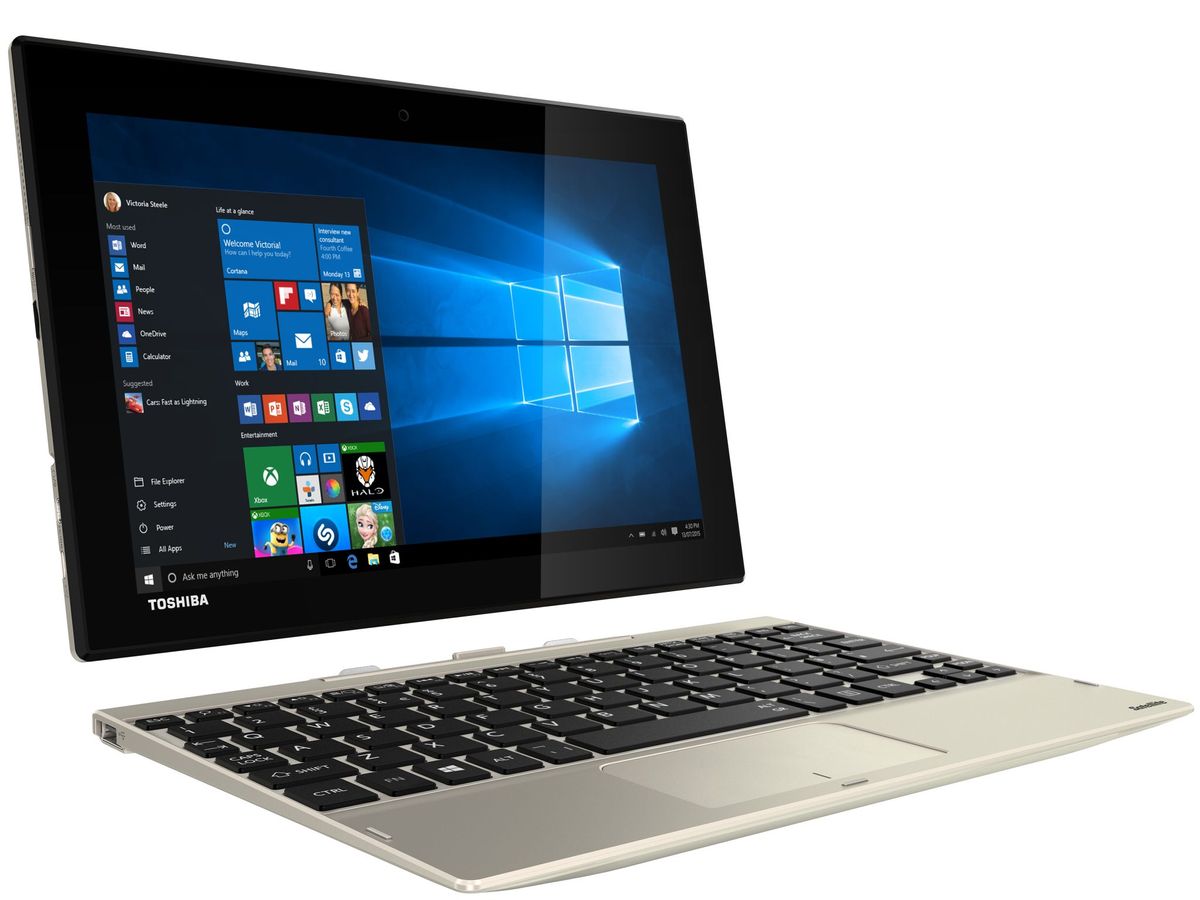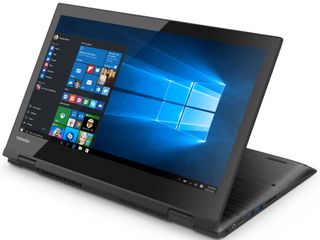Toshiba to launch a Windows 10 2-in-1 with over 14 hours of battery life

Toshiba will be busy launching new Windows 10 notebooks and 2-in-1 devices this fall. In addition to the previously-announced 12.5-inch Satellite Radius convertible, the company also announced both a 14-inch version of the Satellite Radius and the Satellite Click 10, a Windows 10 2-in-1 with a tablet that comes with a detachable keyboard.
The biggest feature of the Satellite Click 10 is its long battery life. Toshiba says users can expect to get over 14 hours of power from the 2-in-1. Toshiba said the tablet half will always charge first and will discharge after the keyboard portion when undocked:
"With the new generation of Intel Atom processor and up to 4GB RAM built in, the Satellite Click 10 delivers excellent performance delivering responsive browsing and efficient multi-tasking. Up to 64GB eMMC storage provides plenty of storage for music, photos and work materials which can be extended further via the microSD card slot on the tablet with a maximum capacity of up to 128GB."

The Satellite Radius 14 convertible will pack some powerful hardware inside, while also including a display that rotates 360 degress to turn it from a notebook to a tablet and back again:
"An impressive battery life of up to ten hours lets users switch between modes for an entire working day and beyond without having to charge. The option of up to new 6th gen Intel Core processors provides premium performance including immersive graphics and stunning video while making the most out of Windows 10 while AMD Quad-Core processors assures ongoing performance regardless of the task at hand. For an additional boost, the Satellite Radius 14's optional SSD support makes for faster boot times and quick access to essential files, as well as reduced power consumption."
Both the Toshiba Satellite Click 10 and the Satellite Radius 14 are scheduled to be released in Europe sometime in the fourth quarter of 2015. Pricing for both products has yet to be revealed, and there's also no word on when they will be launched in other parts of the world.
Source: Microsoft
Get the Windows Central Newsletter
All the latest news, reviews, and guides for Windows and Xbox diehards.
